Sex, Violence, and Vivisection: Are Some Animal Experimenters Psychopaths?
First, they came for the animals. It didn’t stop there.
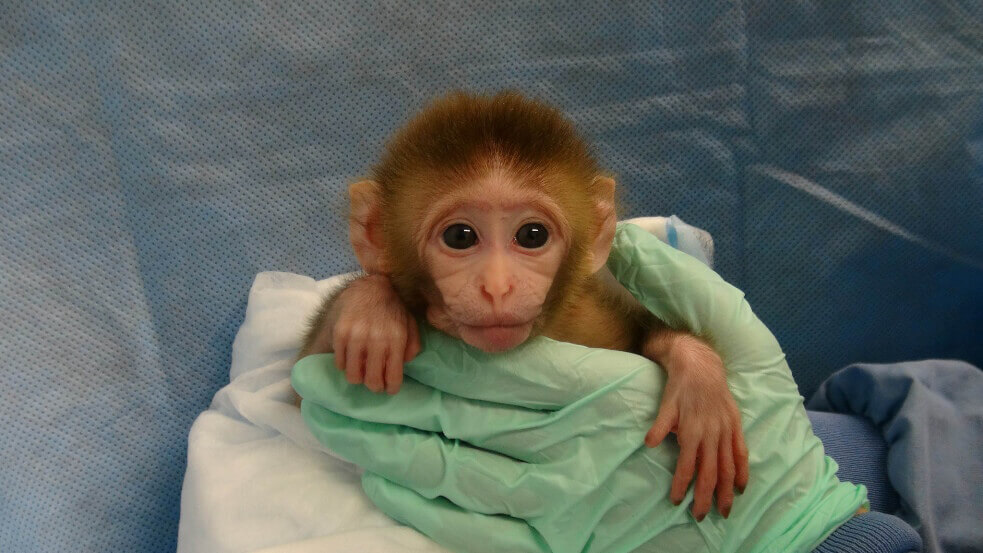
The link between cruelty to animals and other violent crimes is well established. As the deputy executive director of the National Sheriffs’ Association stated, “If somebody is harming an animal, there is a good chance they also are hurting a human. If we see patterns of animal abuse, the odds are that something else is going on.”
That can even be true in the case of those who practice a form of cruelty to animals that is actually protected by law: vivisection. When animal experimenters cut up, burn, torment, and deliberately sicken animals, they’re almost never subject to punishment since that cruelty is being done under the guise of “research.”
Animal experimenters scream at peaceful activists who are holding a silent vigil for primates imprisoned, tortured, and killed in laboratories at the University of California–Los Angeles.
In extreme cases, those who torture animals are full-blown psychopaths, having a dangerous personality disorder marked by traits and behaviors that include a lack of empathy, deception, manipulation, impulsivity, and a callous disregard for the rights of others.
Many psychopaths exhibit a profound lack of remorse for their violent actions and a lack of concern for their victims. As the FBI puts it, “This central psychopathic concept enables them to act in a cold-blooded manner, using those around them as pawns to achieve goals and satisfy needs and desires, whether sexual, financial, physical, or emotional. Most psychopaths are grandiose, selfish sensation seekers who lack a moral compass—a conscience—and go through life taking what they want.”
In 2016, the FBI began to track acts of cruelty against animals as it does other violent felonies. Jeffrey Dahmer, Ted Bundy, and the “Son of Sam” killer David Berkowitz all carried out acts of torture against animals before committing their equally horrific crimes against humans.
Are some animal experimenters closeted psychopaths who have simply found a legally permissible way to act on their violent impulses? Just as the Catholic Church cloaked pedophiles, the animal experimentation industry has provided respectability for some vivisectors whose violence didn’t stop with animals.
Let’s take a look at the “vivisector lineup”:
Tracy McIntosh
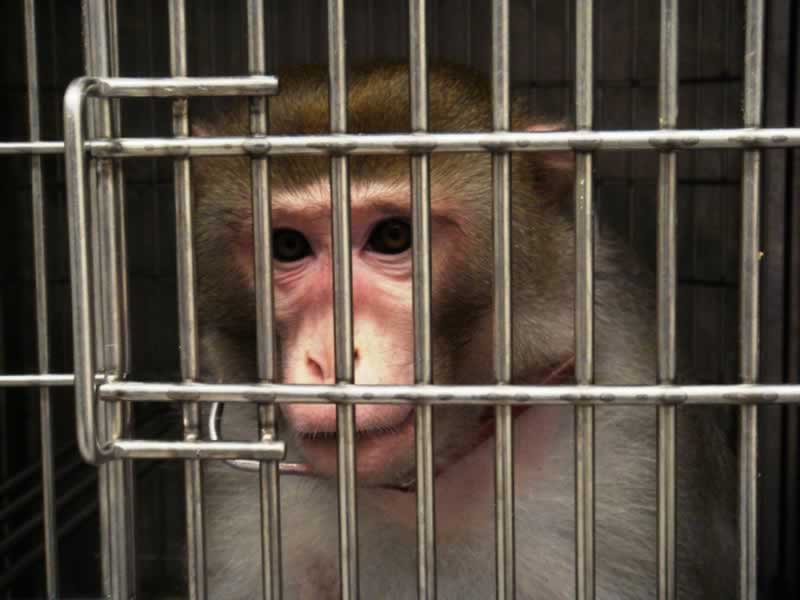

Tracy McIntosh was the director of the University of Pennsylvania’s Head Injury Clinical Research Laboratory, where experimenters bash in animals’ heads. This is the same vile laboratory that PETA exposed in 1984 with a video called “Unnecessary Fuss,” using footage shot by University of Pennsylvania experimenters themselves, in which they subjected primates, some inadequately anesthetized, to horrific head injuries and then mocked them.
In one experiment performed in his laboratory, McIntosh folded back the scalps of anesthetized rats and then cemented caps to their skulls. He then subjected them to a pressurized pulse that deformed their underlying brain tissue. The surviving brain-injured animals were later killed so that their brains could be removed for examination. He has also inflicted pathological brain injuries on cats in painful and deadly experiments.
The National Institutes of Health (NIH) had awarded McIntosh $17,993,514 toward his experiments and the larger program expenses associated with his work.
In 2003, after an extensive police investigation, McIntosh was arrested for the rape of a Penn veterinary student who was the niece of a good friend. According to court records, McIntosh offered to show the victim around the city. On the night of the attack, the victim says that she began to feel “strange” and “out of it” while having drinks at a restaurant with him. She later accused him of giving her Nembutal, a “date rape” drug that was used in his lab to kill rats. The victim says McIntosh eventually took her back to his laboratory, where she remembers him raping her.
McIntosh pleaded no contest to one count of sexual assault and was sentenced to less than two years of house arrest because, the judge said, he had “factored in McIntosh’s important work with stroke victims and brain injuries.” After public outrage at the sentence and an appeal by the prosecutors, McIntosh was sentenced to up to seven years in prison. The sentencing judge said that McIntosh’s crime was “breathtaking in its vileness.”
In the same lawsuit in which she accused McIntosh of giving her a date rape drug, the victim also accused the University of Pennsylvania of covering up his “history of acts of sexual harassment” in order to avoid losing the “millions of dollars of grant money” that his animal experiments brought in. In 2007, the school and McIntosh reached confidential settlements with the victim.
Robert Ferrante


In April 2013, 41-year-old Dr. Autumn Klein collapsed at her home in Pittsburgh. Three days later, she was dead. According to police, she was poisoned by her husband, Robert Ferrante.
Ferrante had a $3 million laboratory at the University of Pittsburgh in which he conducted Huntington’s disease (HD) experiments on mice. To measure the effects of experimental drugs, he would place the mice on a spinning rod to see how long they stayed on. According to him, “The criteria for being killed was the point in time in which the HD mice were unable to right themselves after being placed on their back and initiate movement after being gently prodded for 30 [seconds].”
In an experiment related to amyotrophic lateral sclerosis (ALS), Ferrante evaluated mice for signs of motor deficits by suspending them by their tails. According to his research assistant, they killed “tons and tons” of mice. Ferrante also used rats in his experiments and killed them via decapitation.
NIH had awarded Ferrante $5,470,628 toward his experiments and the larger program expenses associated with his work.
This device is similar to one used in Ferrante’s laboratory to decapitate rats.
According to police, in the weeks before his wife’s death, Ferrante confronted her multiple times with accusations that she was having an affair. Two days before Klein collapsed, police say that Ferrante had one of his staff overnight a bottle of cyanide to his laboratory.
During Ferrante’s 2014 trial, the prosecution said that he had laced an energy drink with cyanide and given it to his wife. He apparently suggested to her that the drink would help her conceive another child, which she desperately sought. Prosecutors also maintain that when his wife collapsed, he wanted her taken to a hospital where he knew that the most effective treatment for cyanide poisoning would not be available.
Ferrante is currently serving a life sentence.
Wyndham Latham
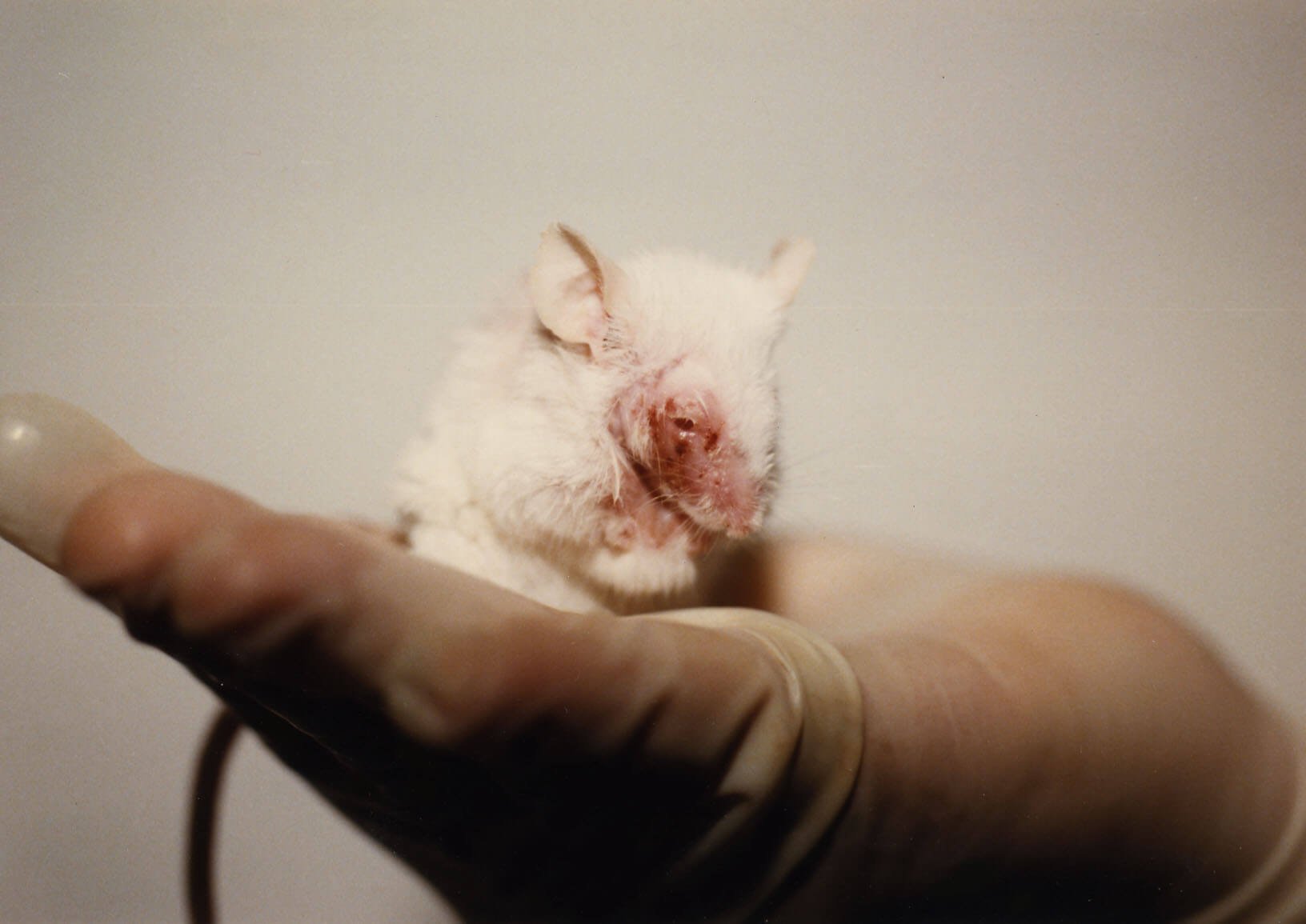
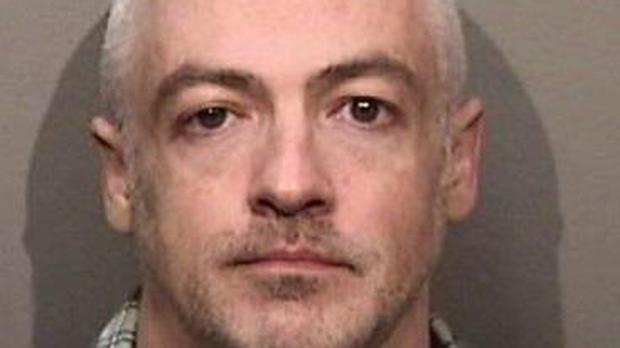
In July 2017, a Cook County, Illinois, judge issued arrest warrants charging Wyndham Lathem and Andrew Warren with the gruesome murder of 26-year-old Trenton Cornell-Duranleau. At the time, Lathem was an associate professor at Northwestern University, where he infected mice with the bubonic plague and watched as they slowly and painfully died.
NIH had awarded Lathem $3,341,887 toward his experiments and the larger program expenses associated with his work.
According to prosecutors, Lathem and Warren communicated online for months about their shared sexual fantasy of killing other people and themselves. Their alleged first victim would be Lathem’s boyfriend, Cornell-Duranleau. On the night of the murder, prosecutors say Warren arrived at Lathem’s apartment while Cornell-Duranleau was asleep in Lathem’s bedroom.
As Warren stood in the doorway ready to record the murder with a cell phone, prosecutors say that Lathem stabbed Cornell-Duranleau “over and over in the neck and chest area” with a drywall knife. The victim began to scream and fight back. Warren then got two kitchen knives, and he and Lathem repeatedly stabbed him. The last thing that Cornell-Duranleau said was, “Wyndham, what are you doing?” Lathem and Warren almost decapitated the victim, who had been stabbed 70 times.
Lathem and Warren admitted to killing Cornell-Duranleau, according to prosecutors. In a video sent to family and friends, Lathem reportedly said that he was not the person people thought he was. But in September 2017, he and Warren pleaded not guilty to first-degree murder charges. They were ordered to be held without bail and await trial.
Michael Katze

Michael Katze specialized in infecting mice and monkeys with Ebola, an infectious agent notorious for causing agonizing deaths. In one experiment, dying mice were allowed to suffer until their weights plummeted by 20 percent within just five to six days. In another, it took seven days for monkeys whom he had infected with the virus to die but not before they “showed the hallmarks of Ebola hemorrhagic fever.” Such “hallmarks” include severe muscle pain, headaches, vomiting, diarrhea, and internal and external bleeding.
NIH had awarded Katze $91,172,217 toward his experiments and the larger program expenses associated with his work.
According to the University of Washington (UW), where Katze was a tenured professor, he routinely made derogatory comments about women as well as gay and Asian employees and made demanding, hostile, and threatening remarks to staff. He also asked a staff member to solicit a prostitute for him, and he asked another to shop for furniture for and vacuum his apartment and pick up his mail.
BuzzFeed reported that UW also found that Katze watched porn on his university computer and allegedly sexually harassed two employees. In the case of one of these women, he reportedly “joked about having sex with her, made sexual comments about her appearance, sent her sexually suggestive emails, and, on two occasions, tried while drunk to kiss or touch her.” During one of these occasions, he allegedly “put his hands all over her” and “ripped her pants.”
After years of tolerating Katze’s disturbing behavior, the university finally fired him in August 2017. However, he seemingly has no remorse for his actions, saying, “My job is to get grants. I am singularly focused on training scientists. This kind of shit is completely unimportant to me.”
Raymond Clark III
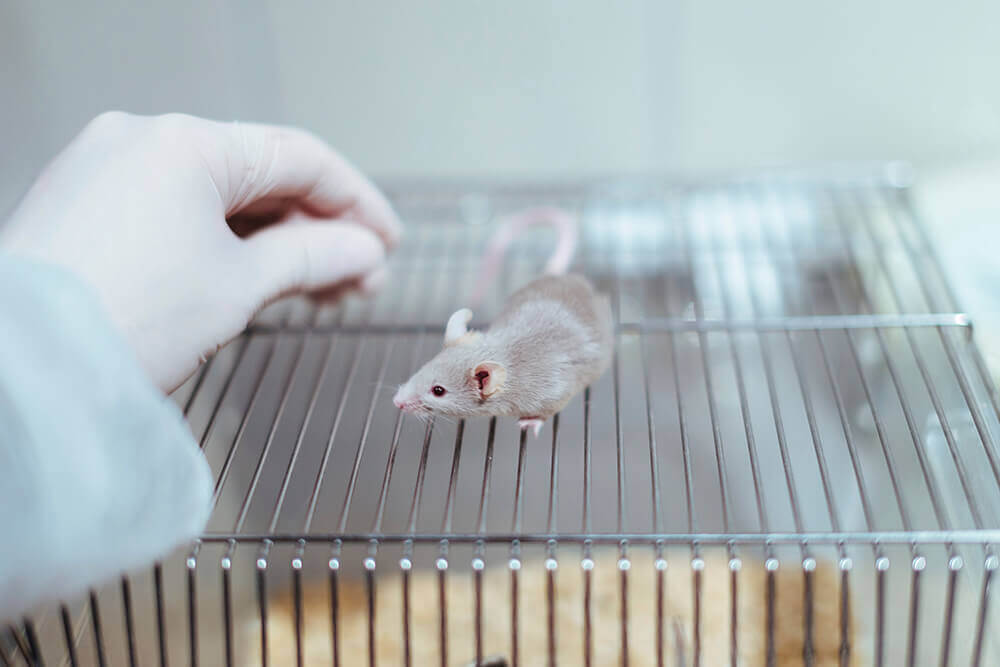
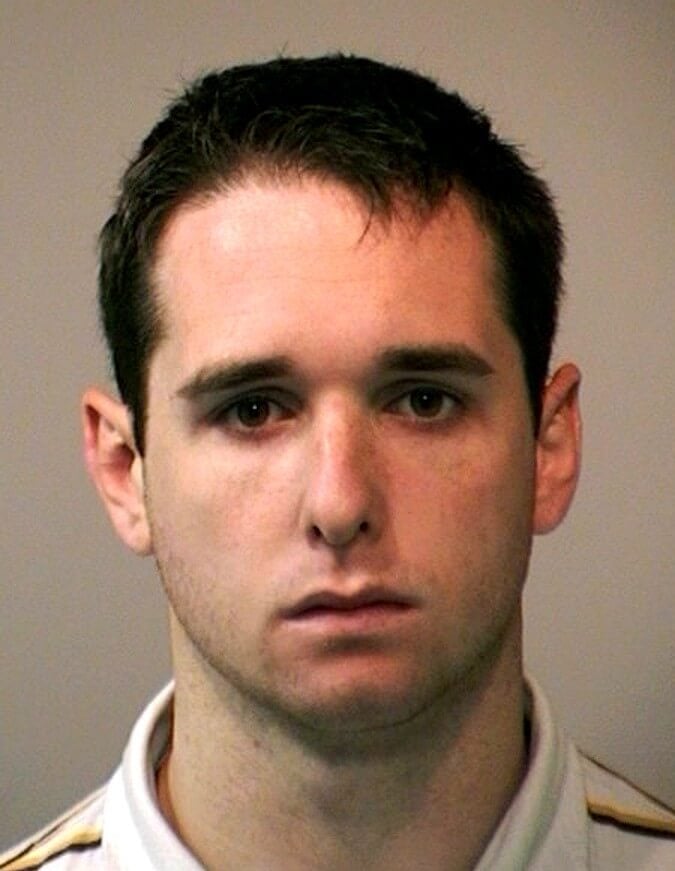
On the night of September 8, 2009, Yale University graduate student Annie Marie Le was reported missing. The last time that she had been seen was that morning when she entered the building where her laboratory was located. Five days later, her body was found in that same building, stuffed inside a utility compartment in the basement.
Shortly afterward, animal laboratory technician Raymond Clark III was charged with strangling Le to death. According to news reports, coworkers told police that Clark was a “control freak” who viewed the laboratory and its mice his territory, and he’d “sent a text message to Le on the day she vanished requesting a meeting to discuss the cleanliness of mouse cages in the research lab.” As a laboratory animal technician, he spent his days gassing mice and rats to death—actions that, according to a coworker, likely contributed to his desensitization. In March 2011, Clark pleaded guilty to murder and attempted sexual assault. He was sentenced to 44 years in prison.
Hengjun Chao


Hengjun Chao ran a lab at the Icahn School of Medicine at Mount Sinai in New York City, and NIH awarded him $1,917,641 toward his animal experiments. In 2007, one of his students accused him of data fraud. She had discovered that in one of his experiments, he had secretly switched out the type of mice he was supposed to use in order to get results that would confirm his hypothesis.
After a faculty investigation substantiated the accusation, the school’s dean, Dr. Dennis Charney, fired him. On August 29, 2016, Chao gunned down Charney as he was leaving a deli in Chappaqua, New York. During Chao’s trial, jurors watched video footage from a surveillance camera in which he was seen staking out the location days before the shooting. While Charney survived the attack, he says that his injuries have left him with seizures that will be with him the rest of his life. Chao was convicted of attempted second-degree murder and first-degree criminal use of a firearm. He was sentenced to 28 years in prison.
John Hagmann
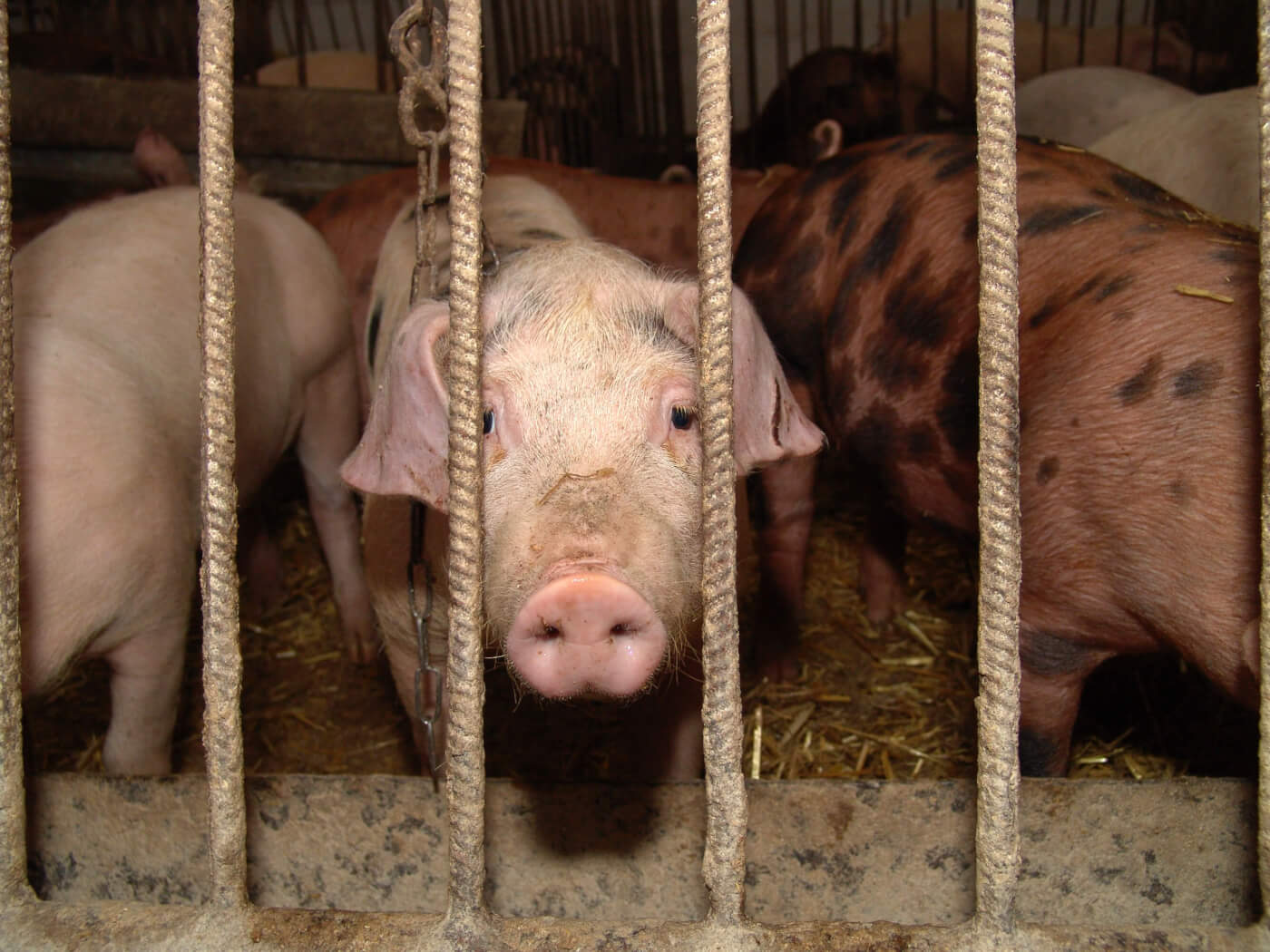
John Hagmann, a physician, is the founder of Deployment Medicine International (DMI), a company that was at one time the U.S. military’s leading contractor for trauma training courses in which live animals are shot and stabbed. From 2013 to 2018, the federal government awarded Hagmann’s companies federal contracts totaling $12,279,185.
In the 1980s, Hagmann created the “training” program in which instructors shoot live pigs and goats and cut into them in order to cause massive bleeding. DMI techniques include cutting off animals’ limbs with tree trimmers, ramming metal rods through their legs, and cutting into their abdomens and pulling out organs. In eyewitness video footage of the course, supposedly anesthetized animals can be heard moaning, a participant comments that a pig was not adequately anesthetized, and DMI staff can be heard saying that another pig has started to regain consciousness while being cut open.
In the video, Hagmann tells students that the best way to know if a blood bag is full enough is to squeeze it to see if it feels like a “boob”—not a “soft boob” but a “nice, firm boob.” During an orientation, he jokingly showed a photograph of a symbol that depicted male homosexual sex with a red line drawn through the image to indicate that the behavior is not permitted.
In 2015, PETA uncovered previously unreleased documents revealing that the Virginia Board of Medicine had suspended and later revoked Hagmann’s medical license because he had allegedly physically and sexually assaulted military service members and drugged them during other DMI courses. The board found, among other things, that he exploited course participants for sexual gratification by performing an inappropriate rectal exam on a student, instructing the student to perform a penis and rectal exam on him, and manipulating and photographing a student’s penis while the student was drunk. The board also found that he had retaliated against a female student who was critical of live-animal use during a DMI course by intentionally withholding the instructions that she needed to practice inserting a tube into a male student’s penis.
In 2015, after PETA informed officials in Washington that Hagmann had lost his medical license in Virginia, the Washington State Medical Commission also suspended his medical license. In 2016, PETA filed complaints with government officials in that state calling for the dissolution of DMI. In a huge victory for animals, DMI was administratively dissolved by Washington state in 2018, as were several additional trauma training companies affiliated with Hagmann.
In 2015, following a PETA complaint to the Department of Defense, the agency barred Hagmann and his companies from receiving any federal contracts until 2030, including for its cruel trauma training on animals.
In 2017, following a PETA complaint, the North Carolina Medical Board informed Hagmann that he and his company could no longer practice medicine or provide medical training involving invasive procedures on humans anywhere in that state.
William French Anderson
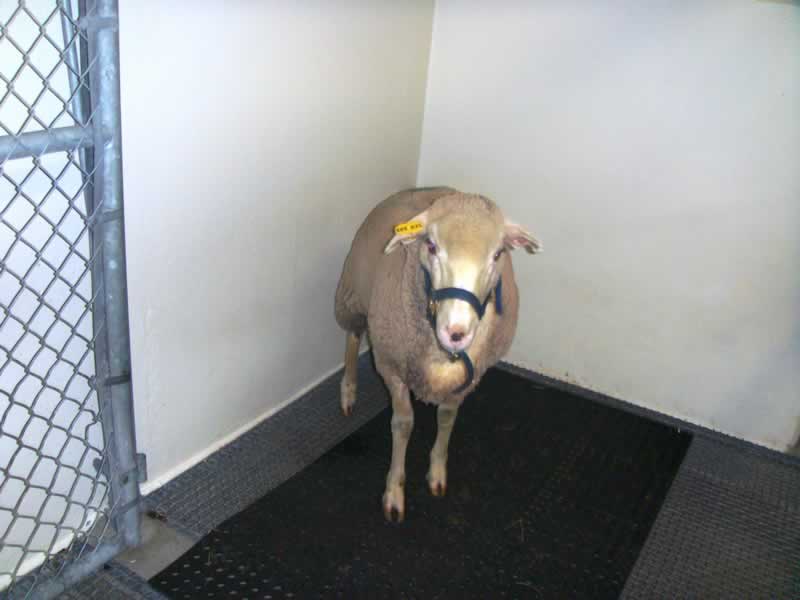

William French Anderson has been called the “father of gene therapy,” a description he earned by experimenting on monkeys, mice, rats, rabbits, and sheep. The director of the Gene Therapy Laboratories at USC’s Keck School of Medicine, he also subjected mice to lethal doses of radiation in order to test the efficacy of an experimental drug.
NIH had awarded Anderson $2,353,264 toward program expenses associated with his work. He’d also received funding for his experiments while he was at NIH, but those figures aren’t available from the agency’s database.
In 2004, Anderson was arrested for sexually abusing the young daughter of his assistant, who said that Anderson had offered to teach the girl martial arts in his home. The child was 10 years old at the time the years of abuse began. In 2006, Anderson was convicted of continuous sexual abuse and lewd acts toward a child younger than 14. During the trial, the victim testified that he had her undress for what he described as medical exams. She also said that when she was an adolescent, he had her undress to her underwear and lie on his bed. She testified that he would then thrust himself on her until he ejaculated.
In her statement to the court, the victim, who cut and burned herself and contemplated suicide as a result of the abuse, stated, “He maliciously destroyed my world to fulfill his own sick pleasures.” The judge said that because of his “intellectual arrogance,” Anderson “got away with as much as he could.” The judge also noted that Anderson showed no remorse for his crimes. Instead, he sent e-mails to the victim in which he told her that exposing him might cause pain to her family.
In 2007, Anderson was sentenced to 14 years in prison (where he bragged that he was treated like a “godfather”) but was released in May 2018. He continues to maintain his innocence. However, in a conversation with the victim that was recorded while she was wearing a police wire, he said, “I just did it, just something in me was just evil.”
Jules Masserman


Jules Masserman, the past president of both the American Academy of Psychoanalysis and the American Psychiatric Association, carried out experiments on cats and monkeys that were breathtaking in their cruelty.
In the 1940s, Masserman confined “half-starved” cats to glass cages, each equipped with a lever that, when pressed, released a food pellet from a box. According to one description of the experiment, “Food came in tiny doses: they had to eat 30–50 times a day to maintain their scrawny weight.” Eventually, he subjected them to air blasts or electric shocks when they attempted to eat, in order to create “acute neuroses” in them. One cat, known only as “cat 56,” produced an “anxious vocalization” when subjected to this treatment. Masserman then starved her for two days and forced her close to the food box by shrinking the available space in the cage, producing what he euphemistically described as “maximum excitement.”
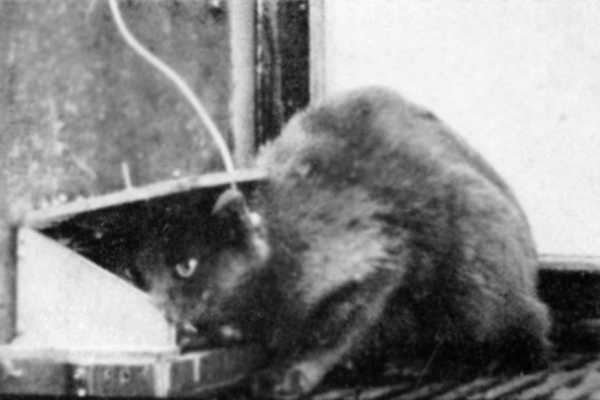
In the 1960s, Masserman turned to torturing monkeys. He devised an experiment in which hungry rhesus monkeys were able to obtain food only if they pulled a chain that administered a painful electric shock to another monkey. But he found that the majority of them had something that he seems to have wholly lacked: empathy. Most of them chose to suffer from hunger, or “self-starvation” as Masserman put it, rather than subjecting another monkey to a painful experience. Those who had previously felt the painful electric shocks themselves were even less likely to pull the chain and hurt another monkey. Masserman reported that one went without food for 12 days rather than shocking another.
His papers indicate that he had received NIH funding, but these grants predate the time period covered in the agency’s database, so it’s not possible to tabulate the amount of federal funding that he received.
Masserman, a professor of psychiatry at Northwestern University, was also in private practice. One of his patients, Barbara Noel, says that he would routinely give her Amytal Sodium, a barbiturate, to help her explore her subconscious. In 1984, during one of these sessions, she says that she awoke to find Masserman on top of her, breathing heavily and naked from the waist down.
Noel sued Masserman and settled with him for $200,000. Three other former patients of his also accused him of drugging and sexually abusing them and they also reached settlements with him. Masserman denied all charges, but apparently rather than facing an investigation by the Illinois Department of Registration and Education (now the Illinois Department of Financial & Professional Regulation), he surrendered his medical license.
Noel wrote a book about her alleged abuse at Masserman’s hands. In it, she says that after he addicted her to Amytal Sodium, he would sadistically withhold it from her. On one occasion, she wrote, he deliberately dropped a vial of it onto the floor and then told her, “What a shame. I don’t have any more.”
In 1992, advice columnist Ann Landers devoted a column to Noel’s book. In it, Landers wrote that rather than expelling Masserman, the American Psychiatric Association voted to suspend him for five years and continued to invite him to meetings. She ended her column with this: “The psychiatric community does indeed take care of its own, but Ann Landers takes care of her own, too, and this column will be read by 90 million people.”
Matthew Galloway
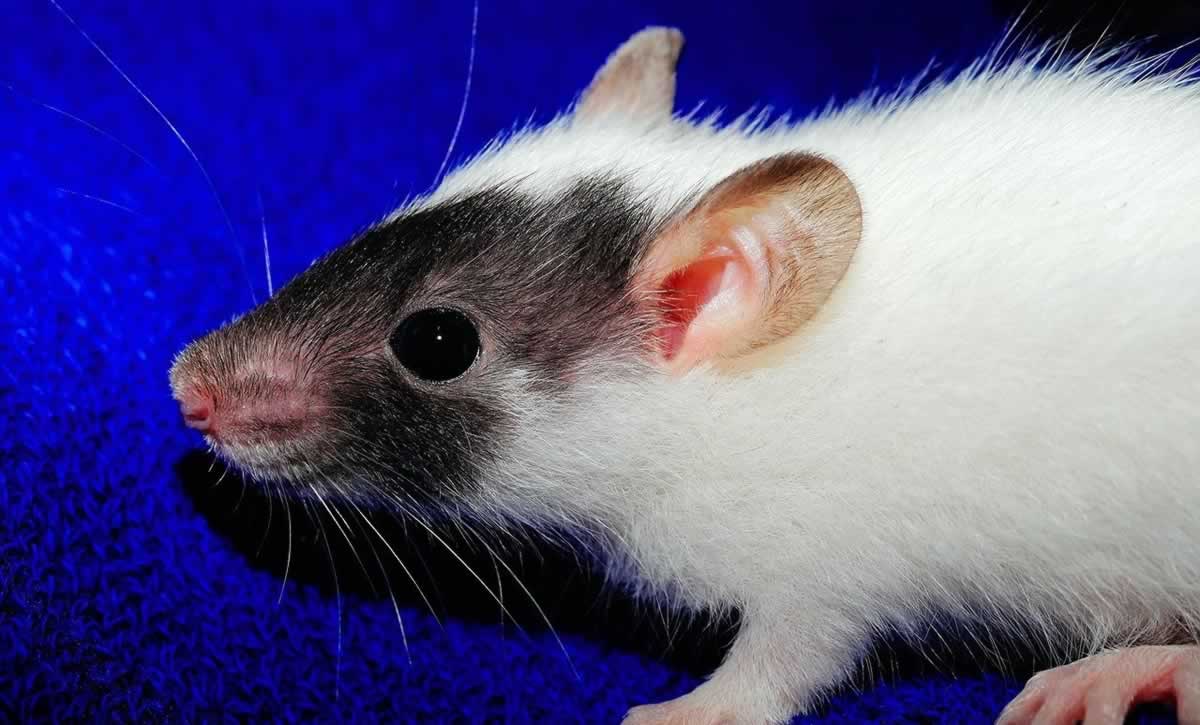
In 2001, Wayne State University (WSU) professor and animal experimenter Matthew Galloway pleaded no contest to “using the internet or a computer to communicate with a person for the purpose of committing or attempting to commit the offense of accosting a minor for immoral purposes.” Court documents and an Associated Press article reveal that he was arrested after he went to a local Walmart store for what he thought was a rendezvous with a 15-year-old girl. He had been communicating online with her and had “described in detail sexual acts he wanted to perform” with her. The “girl” was actually an officer with the White Lake Township Police Department in Michigan.
Following his plea, Galloway was put on probation for two years and ordered to register as a sex offender.
Today, Galloway is still a professor at WSU, where he conducts cruel experiments on mice and rats. In a recently published paper, he and his co-authors describe a study on schizophrenia in which they suspended mice by their tails. He also co-authored a study in which mice were severely stressed by being subjected to a series of torments that included being restrained for two hours and being forced to swim in a tank from which they couldn’t escape.
Galloway also participated in conducting an experiment to create a “rat model of PTSD” (post-traumatic stress disorder), in which rats were addicted to cocaine and then severely stressed using some of the same techniques described above. Galloway and his co-authors wanted to see whether the stressed rats would self-administer more of the drug. He was also involved in experiments in which mice and rats were subjected to traumatic brain injuries, including one in which the brain damage was “blast-induced.”
NIH has awarded Galloway $2,714,224 toward his experiments and the larger program expenses associated with his work.
Michael Simons
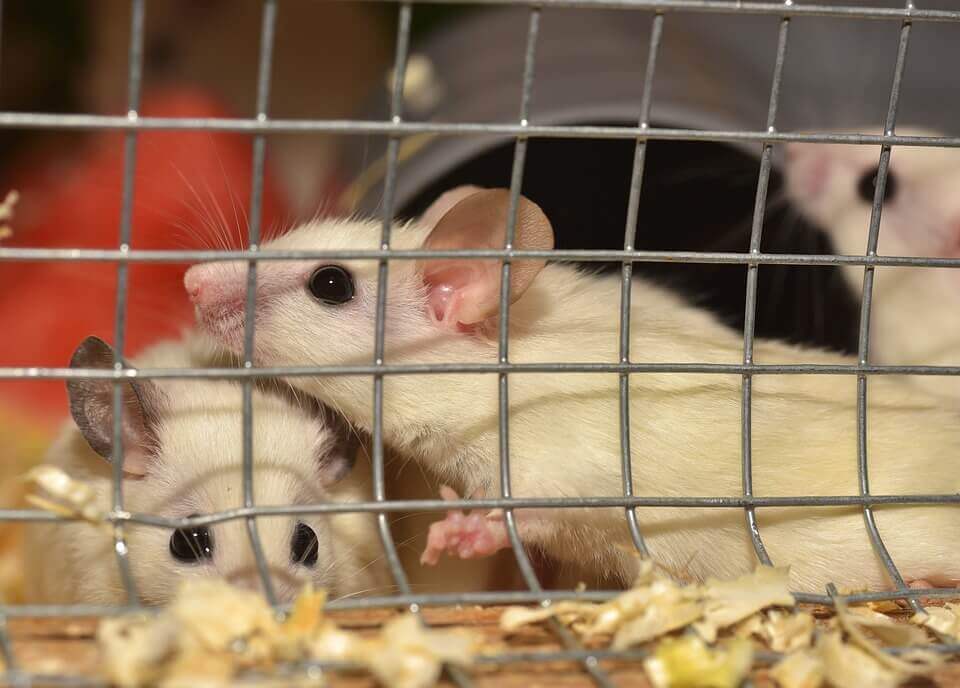
In 2013, a Yale University committee investigated an allegation that animal experimenter and cardiologist Michael Simons had sexually harassed a postdoctoral researcher in written communication and in person. The committee confirmed the veracity of that allegation and also found that Simons exercised “improper leadership and compromised decision-making” with regard to the researcher’s husband—also a cardiologist—who said that Simons prevented him from professionally advancing.
The committee recommended that Simons be removed from his position as chief of the cardiology department. But the university’s provost rejected that recommendation and instead only suspended him for 18 months. As a New York Times article on the scandal put it, some faculty at Yale “paint the picture of an environment in which those who bring in research dollars are not subject to the regular rules.”
Then in 2014, following an independent review, Yale removed Simons as director of its Cardiovascular Research Center.
Despite the findings of both investigations, in July 2018 Yale awarded Simons an endowed professorship in the school’s cardiology department. In reaction, Dr. Paula Kavathas, a School of Medicine professor and former chair of the Women’s Faculty Forum, said, “The awarding of a new endowed chair to Dr. Simons communicates a message of tolerance: Faculty who were found guilty of sexual misconduct are still worthy of receiving this prestigious honor.”
In addition to allegedly mistreating his colleagues, Simons has participated in experiments that tormented and killed mice. In one, “chronic liver injur[ies]” were induced in mice. In another, biopsy punches were used to create wounds in mice. The “potential adverse effects” of another experiment included “pain, paresis [muscular weakness caused by nerve damage], gangrene, weight loss, wound infection, and hemorrhage.”
NIH has awarded Simons 117 grants totaling $51,744,382 toward his experiments and the larger program expenses associated with his work.
Christopher Duntsch


The magazine D rightfully described the case of former Texas neurosurgeon Christopher Duntsch—aka “Dr. Death”—as “[t]he shocking story of a madman with a scalpel.”
This was not a case of mere incompetence.
The Dallas Morning News reported that Duntsch had sent an e-mail to one of his employees “confessing a burgeoning bloodlust.” He wrote, “I am ready to leave the love and kindness and goodness and patience that I mix with everything else that I am and become a cold blooded killer. . . . What I am being is what I am, one of [a] kind, a mother f****** stone cold killer that can buy or own or steal or ruin or build whatever he wants.”
His victims include 63-year-old Floella Brown, who was “killed by a stroke triggered by a sliced vertebral artery from Duntsch’s surgical hands.” According to The Dallas Morning News, “Duntsch wanted to remove part of her skull, too, but hospital administrators refused and had her transferred for emergency treatment to another hospital, where she died.”
Mary Efurd, 74, survived the surgery that Duntsch performed on her but lost the use of her legs as a result of it. When another doctor performed a CT scan on her, he found that Duntsch had “done virtually everything wrong.” According to The Dallas Morning News, “A screw was drilled into Efurd’s spinal cavity, implants were placed in muscle instead of on bone and a nerve root had been completely amputated.”
Duntsch was convicted of the charge of injury to an elderly person in Efurd’s surgery and is currently serving a sentence of life in prison. His gruesome story is the subject of the podcast Dr. Death.
Duntsch also cut open animals, injected them with cancer cells, and killed them. In one experiment in which he was a co-author, windows were placed in rats’ skulls so that cancerous tumors that had been implanted could be viewed. He was the lead author of another experiment in which he injected cancer cells directly into rats’ brains.
Stephen Jenson


In May 2011, a University of Michigan Hospital employee found pornographic images of children on a thumb drive left in a hospital computer. A month later, eight people knew that those images belonged to University of Michigan resident physician Stephen Jenson. According to The Ann Arbor News, “[H]ospital attorneys decided not to turn the incident over to the University of Michigan Police.” When someone contacted the police in November 2011, Jenson was charged and then fired from the hospital.
He had nearly a hundred pornographic images and four videos, government officials stated.
In 2013, Jenson was sentenced to three years in federal prison.
Jenson, while at the University of Utah, spent his days experimenting on mice by infecting them with cancerous tumors. After the tumors had grown sufficiently in at least six immunocompromised mice, they were injected five times a week with a drug treatment. They were killed a month later, and their bodies were dissected. The National Institutes of Health had awarded Jensen $112,125 toward his experiments and the larger program expenses associated with his work.
James Cavalcoli


In 2013, “a sting operation was [set up] on the web where an FBI special agent posed as a Florida father with a 13-year-old son.” According to an FBI affidavit, for almost two years, University of Michigan professor James Cavalcoli “communicated with the undercover agent, eventually making a plan to meet the father and his son in order to have sex with the young boy.”
In 2015, Cavalcoli, who according to the FBI describes himself as a “boy lover,” traveled 1,200 miles to a hotel in Florida to engage in sex with the boy—who never actually existed. Upon his arrival at the hotel, Cavalcoli was arrested by the FBI.
According to the Sun Sentinel, Cavalcoli pleaded guilty in January 2016 “to attempting to coerce or entice a minor to engage in sexual activity and traveling with intent to engage in illicit sexual conduct.” In March 2016, Cavalcoli was sentenced to 10 years in federal prison.
While at the University of Michigan, Cavalcoli tormented and killed mice in a variety of ways. In one experiment, the animals were starved and then their bellies were injected with a glucose solution. Blood was taken from their tails before they were killed and their pancreases were dissected. In another, mice were infected with a bacteria that induced pneumonia. They suffered for 24 hours before being asphyxiated to death, and their bodies were dissected.
Jose Montoya
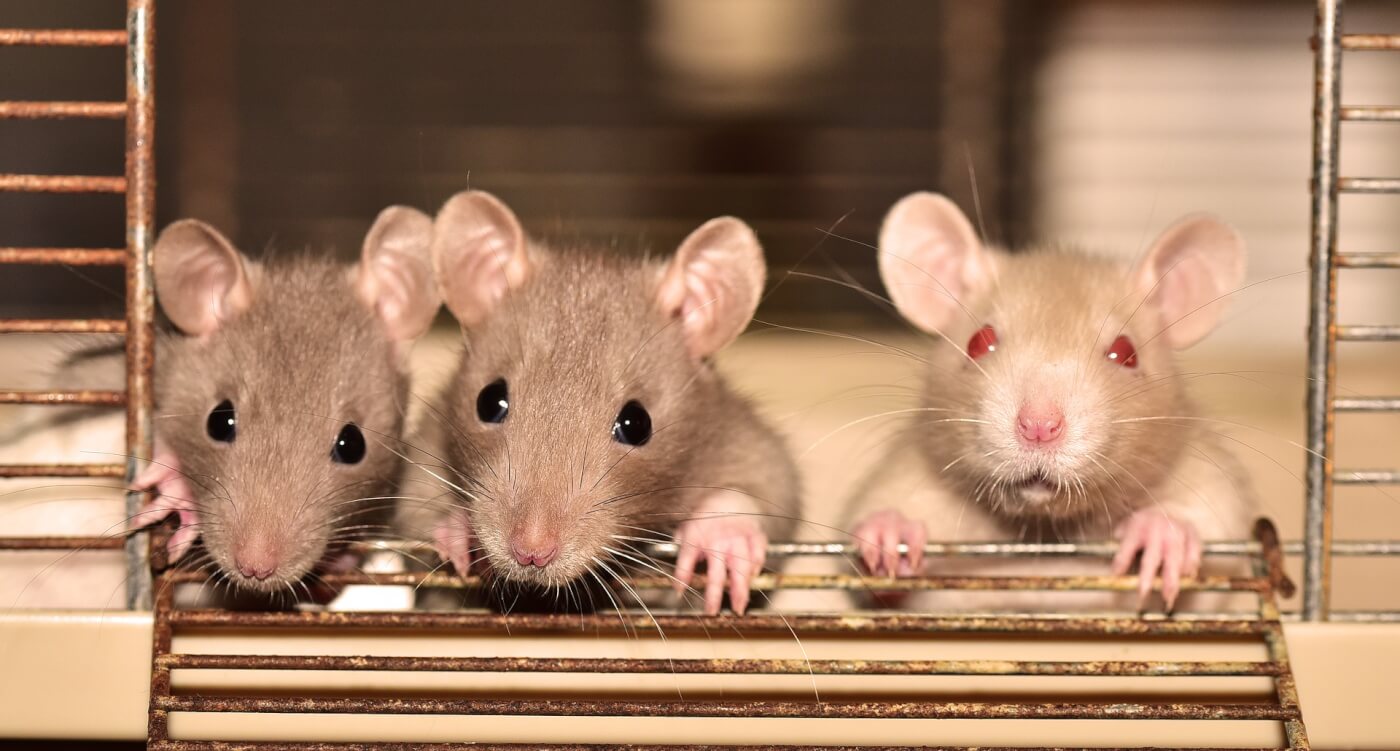
Stanford Medical Center professor Jose Montoya was fired on May 30, 2019, for alleged “[v]iolations of sexual harassment and sexual misconduct.” According to The Stanford Daily, “A group of those affected by Montoya’s actions … wrote a joint anonymous statement in response to his termination.” The statement read as follows:
This past March, a large group of women who have worked under Dr. Montoya came forward with extensive allegations of sexual misconduct, assault and harassment. … The allegations included multiple instances of Dr. Montoya attempting unsolicited sexual acts with his female employees, among many other instances of harassment and misconduct, and were confirmed in an investigation.
Montoya was involved in an experiment in which rats were injected with a chemical that would cause them to develop severe pulmonary hypertension. At the end of the experiment three weeks later, the rats were killed and their bodies were dissected.
Wernher von Braun

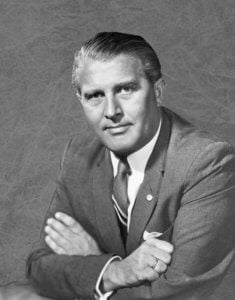
By the time he died in 1977, Wernher von Braun had become a celebrated spaceflight engineer and one of the principal rocket scientists at NASA. He was remembered for his expertise and enthusiastic participation in the early days of space flight, which were instrumental in launching the U.S. space program in the 1960s.
He was also a Nazi, as reported by Time and other media outlets.
Time reports that Von Braun’s contribution to rocket science during WWII included making rockets as weapons for the Nazi regime. His factories were filled with slave laborers from more than 20,000 prisoners of concentration camps. More than 3,000 rockets that were launched at England and other countries, killing 5,000 people and injuring thousands more.
Before he was apparently allowed to help kill humans, von Braun killed mice.
As a student in Germany, he was reportedly obsessed with space flight—specifically the toll on the human body that such a journey would exact, and he set out to simulate it.
Together with a friend, von Braun reportedly attached hammock-like bags to a bicycle wheel mounted on a stand. The pair “borrowed” a dozen mice from a biology lab and placed them in the hammocks. The wheel was spun at a force of up to 220gs—or 220 times the force of Earth’s gravity. Humans generally black out at 9gs because blood isn’t reaching the brain.
The force was so great that it ripped apart the internal organs of the mice.
This experiment was unsanctioned and unsupported by any university or laboratory. It took place in von Braun’s apartment and was abruptly halted when one of the mice became unsecured and was thrown against a wall, killing the mouse. The impact left a bloody mark that was noticed by a concerned landlady, who threatened to toss von Braun out of the apartment and call the police unless he and his friend stopped.
D. Eugene Redmond Jr.

Retired Yale School of Medicine psychiatry professor D. Eugene Redmond Jr. lured students to a research center on the Caribbean island of Saint Kitts and sexually assaulted them—behavior that continued for 25 years, according to an independent investigation commissioned by Yale.
Redmond is accused of sexually assaulting at least five students and performing unnecessary, invasive genital or rectal exams dating to the early 1990s. According to a prosecutor’s report, he “committed other acts of sexual misconduct involving at least eight other undergraduates or recent graduates and one high school student in St. Kitts, New Haven, and other locations.”
Redmond quietly retired from Yale in July 2018, after 44 years at the institution where he had damaged the brains of monkeys and been a vocal supporter of animal exploitation in laboratories. He has been banned from the university’s campus.
At least he can’t harm any more monkeys. The bulk of Redmond’s experiments involved caged monkeys whose healthy brains he infected with drugs to mimic the degenerative symptoms of Parkinson’s disease—a human-specific condition that doesn’t naturally develop in animals. (Experiments on animals have failed to lead to cures and meaningful treatments for Parkinson’s—and nearly all human disease.) Vervet monkeys, the species preferred by Redmond, are native to Saint Kitts, where he set up his laboratory and subsequently lured his student victims.
Take Action
There is a way to protect human and nonhuman victims from dangerous individuals who use universities as safe havens to commit crimes with impunity. We’ve asked the Department of Health & Human Services to require a psychiatric evaluation of anyone who is applying for federal funding to conduct experiments on animals.
Will you help weed out those who seek to violate the rights of others—human and otherwise—by adding your voice to ours?
You’re welcome to use our template letter, but remember that putting the subject line and message into your own words will help draw attention to your e-mail.